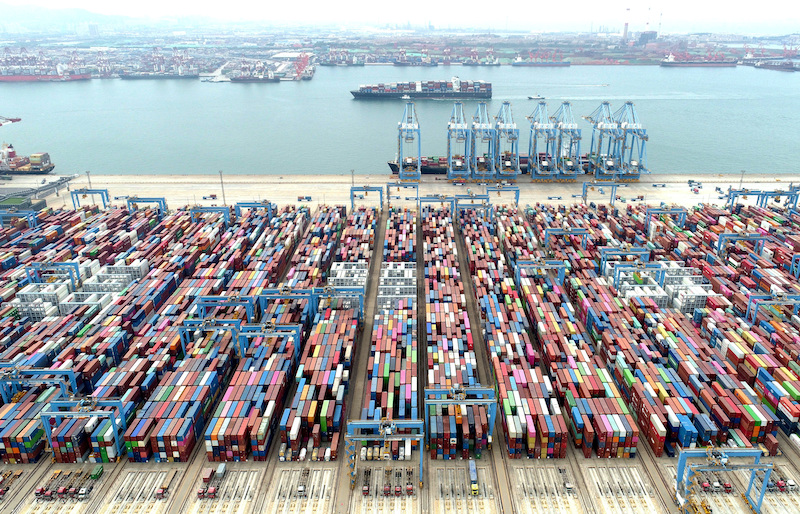China’s exports and imports faltered in August – growing at their slowest pace in months – as inflation weakened global demand and Covid restrictions and other problems eroded manufacturing output.
Exports rose 7.1% from a year earlier, which was well down from an 18% gain in July and analysts’ expectations, official customs data showed on Wednesday.
Outbound shipments have outperformed other economic drivers this year but now face growing challenges as rising interest rates globally, inflation and geopolitical tensions pummel external demand.
“It seems the export softness arrived in earlier than expected, as recent shipping data suggests that demand from the US and EU has already slowed as shipping prices have been falling significantly,” said Zhou Hao, chief economist at Guotai Junan International.
He expects pricing effects will continue to disrupt trade and said import growth in real terms had already turned negative since the late in the first quarter, suggesting more headwinds for demand.
The weakening yuan, which recently hit two-year lows, has not boosted China’s exports growth, highlighting the subdued external demand.
The slower growth is partly due to unflattering comparisons to strong exports last year, but was made worse by more Covid restrictions as infections spiked and heatwaves disrupted factory output in the country’s southwest.
Export hub Yiwu imposed a three-day lockdown in early August to contain a Covid outbreak, disrupting local shipments and delivery of Christmas goods amid the peak season.
ALSO SEE: Chips Banned by US in Big Demand from Chinese Researchers
Imports Flat
Imports were again tepid, rising only 0.3% in August from 2.3% in the month prior, the customs data showed, and well below a forecast for a 1.1% rise. Both imports and exports grew at their slowest pace in four months.
The weak domestic demand, dampened by the worst heatwaves in decades, a property crisis and sluggish consumption, crippled imports.
Global commodity prices continued to fall in August, though at a slower pace.
“The remarkably slower imports growth indicate the sector has faced a wave of headwinds in recent months, which is not expected to ease anytime soon,” Bruce Pang, a chief economist at Jones Lang Lasalle, said.
“Covid outbreaks disrupted supply chains and demand, while the power rationing measures hurt production. The broad dollar strength also brings pressure on imports.”
This left a narrower trade surplus of $79.4 billion, compared with a $101.3 billion surplus in July, which was a record for single-month goods trade balance for any country in history.
Analysts at Goldman Sachs expect China’s large trade surpluses to sustain over the next few years but warned key risks are geopolitical tensions and substantially higher commodity prices over the medium-term.
Assistant Commerce Minister Li Fei said on Monday China’s foreign trade faces unfavourable factors, including weakening external demand.
The central bank on Monday said it would cut the amount of foreign exchange reserves financial institutions must hold, a move aimed at slowing the yuan’s recent depreciation.
- Reuters with additional editing by Jim Pollard
ALSO SEE:
China to Buy Russian Gas in Roubles, Yuan, Says Gazprom
Xi Plans China Technology Push as Tensions Rise With US
Indonesia’s Vale, China Firm Sign $2bn Nickel Plant Deal
China’s Covid Restrictions Affect 49 Cities, Shanghai Forum Off
























